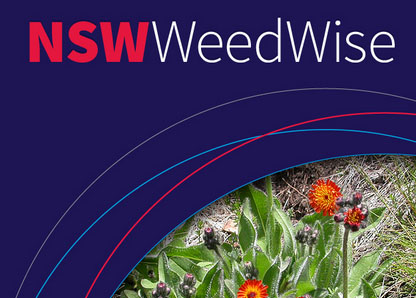Thirty two Weeds of National Significance (WoNS) have been identified by Australian governments based on their invasiveness, potential for spread and environmental, social and economic impacts. A list of 20 WoNS was endorsed in 1999 and a further 12 were added in 2012.
Managing WoNS
Individual landowners and managers are ultimately responsible for managing WoNS. State and territory governments are responsible for overall legislation and administration.
WoNS have been selected as they require coordination among all levels of government, organisations and individuals with weed management responsibilities. The development of a strategic plan for each WoNS helps define responsibilities and identify strategies and actions to control the species.
There are three phases of national management for WoNS. In phases one and two, each WoNS has a Management Coordinator and a National Management Group/Steering Committee to oversee implementation of the goals and actions of the WoNS strategic plans and to develop and coordinate priority actions. In phase three, state and territory governments take responsibility for national coordination within their jurisdictions. The responsible government agencies report to the Australian Weeds Committee on progress against any remaining actions under the strategic plans.
The 32 WONS
The WoNS listed below are individual species or genera. Please note that some of these species or genera are grouped together as one of the 32 WoNS (e.g. Asparagus weeds, Brooms, Opuntioid cacti, and Bitou bush / Boneseed).
Weeds of National Significance
Under the National Weeds Strategy, 20 introduced plants were identified as Weeds of National Significance (WoNS).
These weeds are regarded as the worst weeds in Australia because of their invasiveness, potential for spread, and economic and environmental impacts.
The weeds are:
- Alligator weed
- Athel pine
- Bitou bush / boneseed
- Blackberry
- Bridal creeper
- Cabomba
- Chilean needle grass
- Gorse
- Hymenachne
- Lantana
- Mesquite
- Mimosa
- Parkinsonia
- Parthenium weed
- Pond apple
- Prickly acacia
- Rubber vine
- Salvinia
- Serrated tussock
- Willow
in April 2012 the following species where added to the list
- African boxthorn
- Asparagus weeds
- Bellyache bush
- Brooms
- Cat’s claw creeper
- Fireweed
- Gamba grass
- Madeira vine
- Opuntioid cacti (Prickly pear)
- Sagittaria
- Silverleaf nightshade
- Water hyacinth.
More information: Weeds of National Significance (www.weeds.gov.au)
National Environmental Alert List Weeds
Under the National Weeds Strategy, 28 environmental weeds were identified National Environmental Alert Weeds. Alert Weeds are non-native plant species that are in the early stages of establishment and have the potential to become a significant threat to biodiversity if they are not managed.
The weeds are:
- Barleria
- Blue hound's tongue
- Cane needle grass
- Chinese rain tree
- Chinese violet
- Cutch tree
- Cyperus
- False yellowhead
- Garden geranium
- Heather
- Holly leaved senecio
- Horsetail species
- Karroo thorn
- Kochia
- Lagarosiphon
- Laurel clock vine
- Leaf cactus
- Lobed needle grass
- Orange hawkweed
- Praxelis
- Rosewood
- Senegal tea plant
- Siam weed
- Subterranean cape sedge
- Uruguayan rice grass
- White Spanish broom
- White weeping broom
- Yellow soldier
More information: National Environmental Alert List (www.weeds.gov.au)

